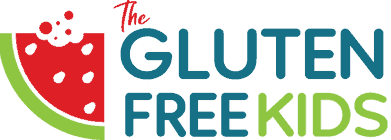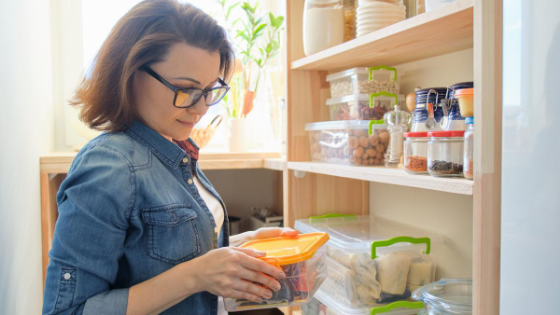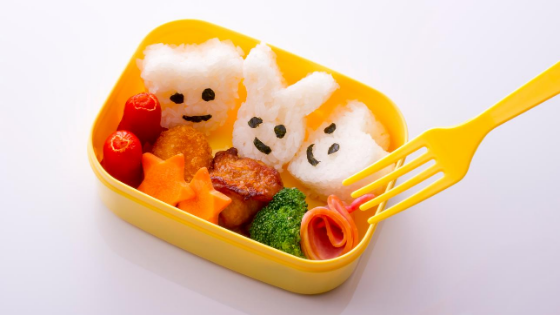15 Things I’ve Learnt Since My (First) Child Was Diagnosed With Celiac Disease
Going ‘Gluten-Free’ (By Necessity)
When our (then) two-year-old was very sick in hospital, the doctors were stumped, and some very scary possibilities were presented to us to why he must have been so ill. So, on day five of his hospital stay, when a diagnosis of Celiac Disease was given, we were actually pretty relieved.
Phew. ‘Just’ a gluten free diet? And our son will recover? Sure, we can do that!
We bundled him up and breathed a sigh of relief as we were finally discharged from hospital, with brochures and a follow up appointment scheduled with the Dietician.
My knowledge of Celiac Disease and a true gluten free diet (not just a haphazard ‘trendy diet’) was limited.
I madly researched, worried, spent hours and hours at the supermarket roaming the shelves, crying, reading labels, crying some more, more roaming and then dropping a large fortune on a grocery shop that didn’t really have much to show for it.
Sure, I had a whole lot of packaged ‘gluten free’ snacks, but what was I going to serve for breakfast, lunch and dinner? To an already picky-eating toddler.
It was stressful.
Well, it’s been a big learning curve, but so worth it to see my now healthy, happy and energetic 9-year-old, (now) 13-year-old, recover and even thrive! While I continue to learn and experiment with gluten free recipes, I want to share what I wish I had known when we started our gluten free journey. I hope it makes it somewhat easier for other parents and caregivers going through a similar tough time.
It gets easier, trust me! Here are 15 things that I’ve learnt that I hope will also help you:
1. Don’t Eliminate Gluten Before Speaking To Your Doctor
This one wasn’t an issue for us, as a trip to the emergency department resulted in our initial diagnosis. However, I’ve since heard of countless stories of botched diagnoses and general confusion and frustration when being all too quick to eliminate gluten from the diet.
This is because currently (and this will depend on your country of residence), Celiac Disease is formally diagnosed in two ways:
- A blood test to measure antibodies in your blood and/or genetic testing.
- An endoscopy – to test for any damage to the Villi in the small intestines.
So always speak to your doctor first if you or your child is experiencing any health issues.
If you eliminate gluten from the diet too soon, it won’t be detected in one or both of these tests. Therefore, a formal diagnosis can’t be given. The affected person never finds out if they are dealing with an autoimmune disease that is life-long (Celiac) or a gluten intolerance (that may not be life long).
Depending on the country you live in, this can affect extra support being given from schools and funding towards a gluten free diet.
2. Improvements Can Happen Fast
It’s not instant, but it’s also really surprising how quickly you can notice an improvement once gluten has been eliminated. This will of course depend on the affected person’s symptoms when they commence a gluten free diet, and how severe they are, but you may notice quick changes or ones that take a bit longer.
In our case, we noticed the following:
- One child had a few constipation issues that took a few weeks to really sort out, but the vomiting ended instantly, and energy, colour, mood and behaviour all started improving within 1-2 weeks.
- My daughter’s sore tummy and headaches ceased immediately and the skin rashes within a few weeks.
- My youngest child’s mood, energy, tummy aches were all better almost instantly, however he started with minimal symptoms as he rarely ate gluten before he was required to do a ‘gluten challenge’ to be formally diagnosed.
Again, everyone is different so don’t hesitate to speak to your medical provider about your individual situation.
3. Lots of Foods Are Already Naturally Gluten-Free
I like to think of the positives wherever possible.
Keep it simple and focus on what your child can eat. The following groups of foods are all naturally free from gluten and therefore should form the basis of your meals:
- Fresh, unprocessed fruit and vegetables
- Milk (check flavored or soy milks for hidden gluten)
- Butter
- Eggs
- Legumes
- Nuts
- Oils & Fats
- Unprocessed meats and seafood
- Rice
- Corn
- Soy
- Millet
- Amaranth
- Buckwheat
- Quinoa
4. Get to Know What Ingredients To Avoid
The only treatment for Celiac Disease is to consume a strict gluten free diet. It becomes a non-negotiable.
While gluten can go by various names and hide in surprising foods, gluten is generally found in these ingredients:
- Wheat
- Barley
- Rye
- Oats – Some can tolerate oats (that aren’t contaminated), however we don’t eat oats in our gluten free diet.
It may seem like it at first, but you will get to know what to look out for and will become second nature. Before that happens, here’s a handy list.
Be sure to pick up an ingredient list from your doctor or dietician.
5. It’s Important to Educate All Caregivers
Once you’ve learnt the basics of a gluten free diet, it’s important that you pass on this information – to all caregivers in your child’s life.
Depending on the age of your child, you need to get them on board too. Explain to all caregivers and your child (in an age appropriate way):
- what gluten is,
- what it does to them,
- how it makes them feel, and
- why it’s important that they no longer eat foods with gluten in them
The earlier you start, the better. I can’t tell you how many times my kids have spoken up and asked a well-meaning adult “Is this gluten free?” before accepting a cookie, piece of cake etc.
My three-year-old even asks – though his actual understanding of what gluten is, is extremely limited. It has stopped 99% of gluten-incidents from occurring when I’ve been distracted, or not present (remember, we all do the very best we can!).
6. You Don’t Have to Rush Out and Buy All the Gluten-Free Substitutes
Gluten free products and special ingredients can be expensive. And sometimes, completely unnecessary. And unfortunately, lacking in taste and texture.
So, hold up and get your head around what you can and can’t use in a gluten free diet first. Take stock of what you currently have in your fridge, freezer and pantry and remove/donate what contains gluten, making note of what you need to replace.
You will come across some interesting ingredients on your new gluten free diet, but I recommend first planning your meals/baking and then making a list of groceries that you require. Not everyone loves baking and some of these ingredients will expire before you get around to using them, so don’t waste your money on buying ALL the gluten free things just yet.
7. You Can Make Almost Everything ‘Gluten Free Friendly’
If I honestly had to rate the meals that can be converted (or substituted) to gluten free in order of easy to hard(er), it would be:
- Gluten free dinners
- Gluten free lunches
- Gluten free breakfasts
- Gluten free snacks
- Gluten free baked goods (bread, cakes, etc)
The good news is that gluten free foods have come a long way, even in the 7+ years I’ve been preparing them.
There are some amazing 1 for 1 gluten free flours readily available. This means that you can use any ‘normal’ recipe and simply substitute the ‘normal’ flour for gluten free in the same measurement size.
Now, to gluten free newbies, this might not seem like a big deal, however gluten free flour has come a long way in the last few years, and this wasn’t always the case (I for one, am super grateful). Adjusting flour levels for normal recipes often didn’t’ go well and caused an expensive baking disaster.
Look out for 1 for 1 flour as they’re truly great!
When starting out on a gluten free diet with children (especially as they can be somewhat picky), try and do a mixture of introducing some new, fun recipes and then simply adjusting some old faithfuls. This way they won’t feel like they’re missing out and the changes don’t seem so drastic.
8. You Really Have to Be Prepared
Once you’ve passed the toddler stage, you normally get to stop taking the diaper bag everywhere you go when leaving the house. Right?
Well, unfortunately, when it comes to being gluten free, you need to remain prepared. Always. Because kids go from zero to hangry quick!
Fast food places, some restaurants and vending machines are often not gluten free friendly and can’t be relied on to satisfy hangry children in a pinch. I try to always have snacks on hand, in the car and in backpacks for any unexpected delays, longer day trips or adventures.
So, a little preparation will not only ensure you have a gluten free snack on hand, but it will also save you a lot of money! You can be gluten free ready by:
- Packing gluten free snacks, fresh fruit and drinks when you leave the house,
- Calling restaurants ahead to ask their gluten free/Celiac procedures, or checking their menus online to see what their gluten free options are,
- Baking extra goodies and freezing them for when you need to grab and go,
- Discussing what will be served when invited over to other people’s homes for meals and parties.
- Discussing your child’s allergy plan and gluten free substitutes with their teacher so they don’t miss out on cooking activities and other children’s birthday celebrations.
All of the above sounds so daunting, but you will get an easy system going whereby these become second nature.
9. Cross Contamination Is Real
Cross contamination is when gluten free foods become ‘tainted’ or contaminated by gluten foods. This can happen surprisingly easy but is also completely avoidable. The main ways to avoid this are:
- Label everything in your kitchen well to avoid having to guess if something is gluten free,
- Use a separate toaster, butter and condiments (if there is gluten bread in the home) as these can collect sneaky crumbs,
- Use a separate chopping board and utensils than gluten eaters.
Obviously, the easiest way is to make your entire home gluten free. This saves a lot of problems and allows everyone in the home to cook and prepare freely, knowing there won’t be contamination issues.
10. Not Every Belly Ache/Vomit/Rash, Etc Is from Gluten Contamination
I am super vigilant, especially after seeing my eldest child so ill from gluten. It was heartbreaking. For a long time after, I was anxious of any little sign or symptom that I had seen before and was quick to assume that he had been ‘glutened’ somehow.
Turns out, not every tummy ache, every bout of vomiting, every rash, headache or toileting issue is a sign of gluten contamination. Kids are still kids. They get messy, pick up germs and they will still get sick.
As parents, we all do the very best we can.
Speak to your doctor about having a procedure if you suspect your child has been ‘glutened’.
11. Just Because It’s ‘Gluten-Free’ Doesn’t Mean It’s Good for You
Woah, this was a big learning curve for me!
Going ‘gluten free’ was a trendy diet when we first encountered it in 2013. To lose weight and feel better?
My eldest desperately needed to put on weight, so what was I missing here?
Turns out just because it’s gluten free, does not mean it’s healthy. This is such a misconception. I spent a small fortune on substituting snacks, breads and all kinds of processed junk.
Turns out I was missing the best opportunity for gluten free eating. The opportunity to go back to real, wholesome, flavorful, healthy foods.
Be careful, to not just replace breads for a gluten free bread that is full of sugar and processed snacks that are gluten free (but full of artificial coloring and additives) and overly processed meals that don’t resemble any of their original ingredients.
I’m by no means perfect, but my family all eat better quality of food since going gluten free, because we pay attention to what’s actually in it more. Yes, it takes more time but it’s so worth it!
12. Check Ingredient Labels – As They Change!
Okay, this one is a cruel trick.
I bought a packet of potato chips a few months ago. Ones that I have purchased multiple times before. I knew they were gluten free.
Except now they weren’t!? And I nearly fed them to my kids as usual.
It was a reminder that product manufacturers can, and do, change their ingredients and their manufacturing processes from time to time based on ingredient availability, costs and manufacturing contracts. Therefore, it’s important to always keep an eye on the ingredient list for all products that you buy, each time.
Better to be safe than sorry!
13. It’s Likely To Be Hereditary
When our eldest was first diagnosed, the doctors quickly followed it up with “You will both need to be tested, because it’s come from one of you.” Oomph.
Celiac Disease is hereditary and it clusters in families. Again speak to your doctor about what this means for your whole family.
In our experience, my husband and I were both tested, and I was the one who tested positive. I then went on to have a biopsy and showed that mine had recently been ‘triggered’. I was asymptomatic (showed no symptoms) but am very appreciative I found out sooner rather than later.
14. It’s Important To Get Your Gluten Free Kids Involved
To keep the kids interested in what they’re eating, enjoying their food and experimenting with gluten free options, it’s great to get them baking and understanding gluten free eating.
I like to choose themes (Mexican, pasta, Chicken etc) and get the kids to have an input into what we will be eating during the week. They love food and I love making sure they don’t miss out on all the great things about food, despite pesky gluten! I find if you keep them interested and provide options, they are less likely to feel a lack or focus on what they are missing out on. Which leads me to….
15. There Will Be Rebellious Stages
No matter how hard you try to embrace a gluten free diet for your family, to substitute and make your child feel like they aren’t missing out on anything, there will still be challenges.
Because let’s face it, children don’t like to be singled out or feel ‘different’.
I’m fairly lucky in a way that my children were all diagnosed young. While I still had 100% control over that they ate. They knew no different. Until of course, they get a bit older, they go to birthday parties and they miss out on the occasional treat – mainly because I’m caught unprepared without a substitute!
My 7-year-old daughter has recently been complaining how ‘it’s not fair’, she wishes she wasn’t ‘gluten free’ etc. As I’m Celiac now too, I can empathize. I also know that there will come times, probably when they are teenagers, where they will test the boundaries on the whole gluten free diet. I don’t know how I feel about that yet, or what I will do to attempt to avoid it… yet – I will keep you posted!
If you need any help on this, perhaps speak to your doctor or a registered Dietician for suggestions.
What I can do now, is continue to make them feel like they aren’t missing out on anything (as best I can) and to educate them on the effects of gluten on how their health and how they feel.
Lastly, I just want to say that while it seems overwhelming at first, you can do it! It will become the new normal for you and your family.
I really hope this helps other parents and caregivers. Be sure to check out the website for recipes and more gluten free information.




Thank you for your encouragement. My 9 year old daughter was just diagnosed and because of your post I am going to get tested. It's just the start of my journey with my child and I appreciate your honesty.